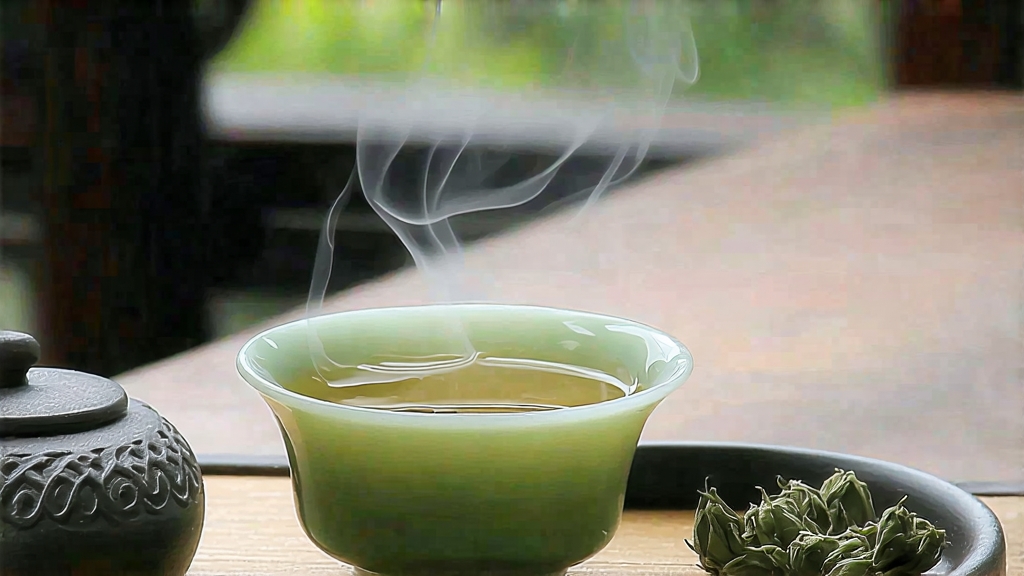
Among the six great families of Chinese tea, white tea is the least theatrical yet the most elusive, and within that quiet clan Bai Hao Yin Zhen—literally “White Hair Silver Needle”—reigns as the uncrowned queen. All silver needles come from Fujian Province, but only those plicked in the coastal county of Fu-Ding and the neighboring highlands of Zhenghe are granted the protected geographical indication that connoisseurs treat like a grand cru. To international drinkers who meet it for the first time, the tea looks almost too pristine to be real: plump, spear-straight buds sheathed in silvery down, smelling of fresh alfalfa and distant melon. Yet behind that modest appearance lies a history of tribute, smuggling, maritime trade winds, and a craft that relies more on patience than on fire.
Historical scrolls first mention “white down tea” during the Song dynasty (960-1279), when the imperial court in Hangzhou demanded tiny buds pressed into dragon-phoenix cakes. Those cakes vanished with the dynasty, but the buds kept appearing in local annals. By the 1850s Fu-Ding peasants, tired of green-tea price swings, began to wither the buds naturally and sell them to Cantonese merchants who shipped them to Southeast Asia where miners believed the tea cooled internal heat. In 1891 a Fuzhou firm exhibited Silver Needle at the International Agricultural Fair in Venice; European physicians praised its “delicate tonic effect,” and the name stuck. The 20th century brought war, neglect, and the rise of black tea, yet a small state-run factory in Fu-Ding kept the technique alive, mainly for foreign-exchange earnings. Only after 2005, when Chinese domestic markets rediscovered white tea’s low caffeine and high antioxidant profile, did Silver Needle become a luxury item sought by Beijing entrepreneurs and Brooklyn baristas alike.
Strict Chinese国家标准 (GB/T 22291-2017) allows only three cultivars—Fuding-Dabai, Fuding-Dahao, and Zhenghe-Dabai—to be used for authentic Silver Needle. Fu-Ding’s coastal hills, brushed by the East China Sea, give cool foggy dawns and mineral-rich lateritic soil; Zhenghe, further inland and 200 m higher, offers warmer noons and chunkier buds. The two terroirs create sibling teas: Fu-Ding needles are slender, aroma-forward, with a honeysuckle top note, whereas Zhenghe versions are broader, more apricot-sweet, and age into darker amber. Both, however, must be harvested in a narrow early-spring window when the bud reaches 2.5–3 cm but has not yet unfurled into a leaf. Experienced pickers work backwards through the row, nipping each bud with a faint click that signals the perfect snap point; they drop it into a bamboo creel lined with banana leaf to prevent bruising. A full day’s work yields barely 500 g of fresh material, which shrinks to 100 g after withering.
The craft protocol sounds deceptively simple: wither, sort, dry. Yet each verb hides micro-decisions that decide whether the finished tea will taste like dewy pear or like wilted lettuce. The buds are first spread on bamboo trays stacked in a sun-room whose slatted roof filters the March sunlight to a soft 20 000 lux. For the next 36–48 hours they lose moisture slowly while endogenous enzymes convert lipids into floral volatiles; the ambient humidity must stay between 65–70 % so the downy hairs do not trap stale air. Around midnight, when the delta breeze picks up, masters slide the trays onto open verandas to absorb cool air; this diurnal shock “locks” the fragrance. At 8–9 % residual moisture the buds are hot-air dried at 80 °C for just ten minutes—long enough to halt oxidation but short enough to preserve the silver sheen. No pan-firing, no rolling, no kneading: Silver Needle is tea in near-original form, a time capsule of early spring.
Because the buds still breathe, Silver Needle belongs to the rare category of teas that improve with deliberate aging. In Fu-Ding, wholesalers store cakes of compressed needles in clay jars buried in cool loam rooms; over five to fifteen years the residual enzymes perform a quiet post-fermentation, turning the liquor from pale citrine to deep topaz and adding notes of dried longan, sandalwood